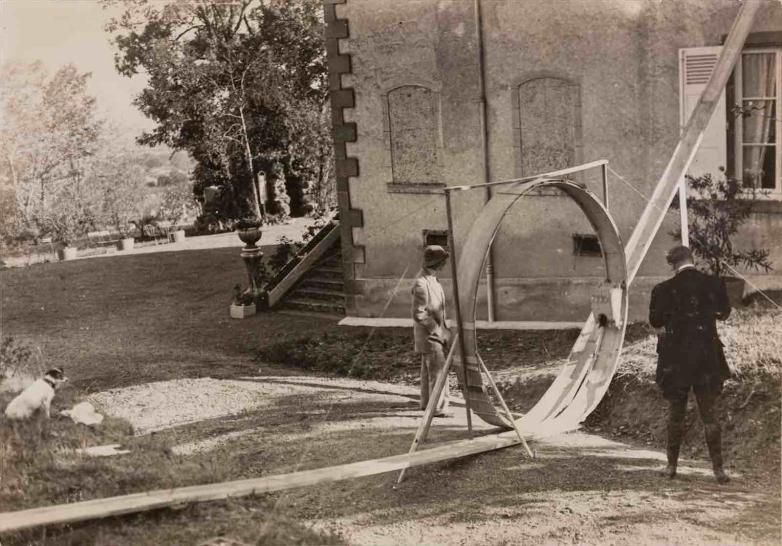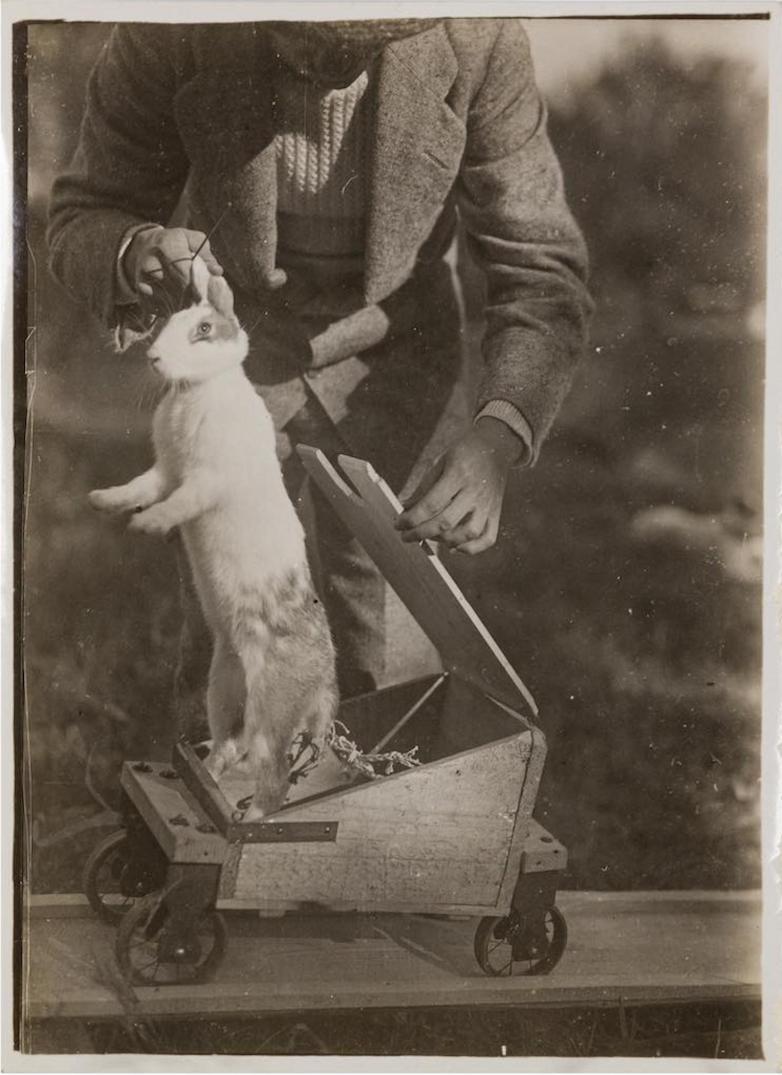The pair of silver gelatin prints document an episode in September 1911 when Lartigue and his brother, fondly nicknamed Zissou, constructed a loop-de-loop track which transported the family's unsuspecting rabbits and chickens in a tailor-made car. Descent, showing the wooden track descending from a second-floor window, is framed alongside Arrived that depicts a family pet emerging apparently unscathed from the journey.
Lartigue wrote in his diary of the experiment: "Thanks to the inventive genius of my brother, our hens and rabbits were lucky enough to find themselves guinea pigs, and thus able to experience many strong acrobatic emotions which were denied to us! Our parents need not have worried, there were no accidents."
Lartigue was taught to use a camera by his father at the age of seven and documented his privileged, playful life from this early age. His images of racing cars, promenading Parisian ladies, and daring airplanes would come to define the elegance and innovation of Belle Epoque France. Between 1979 and 1986, Lartigue gifted his archive to the French state. It is now kept at the Médiathèque de l'architecture et du patrimoine (MAP) in Charenton-le-Pont.
These two prints were formerly in the personal collection of Lartigue's third wife, Florette (née Ormea) whom he married in Paris in 1945.

















